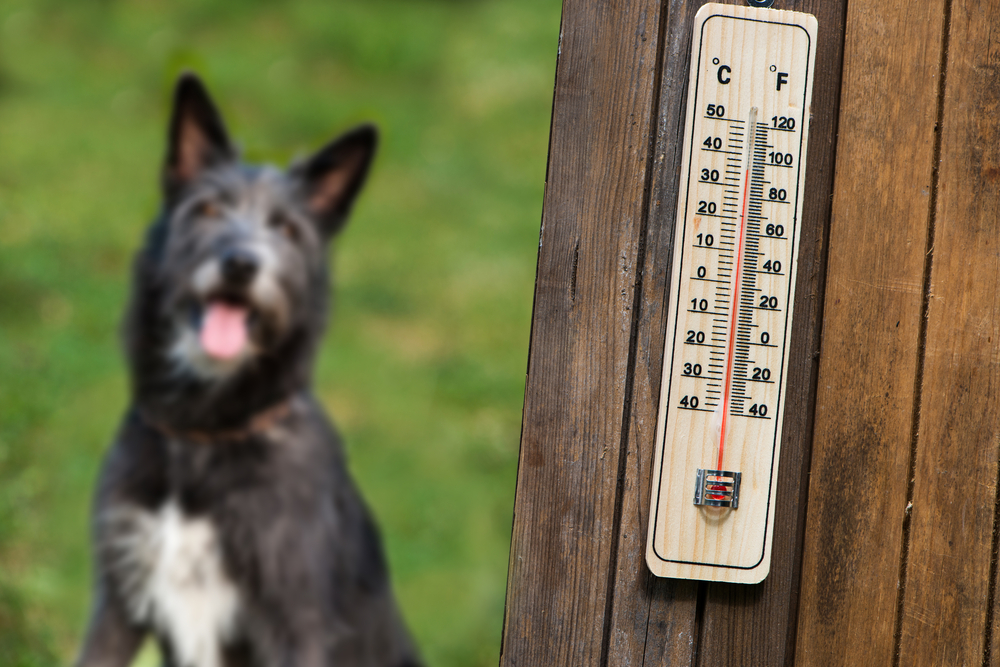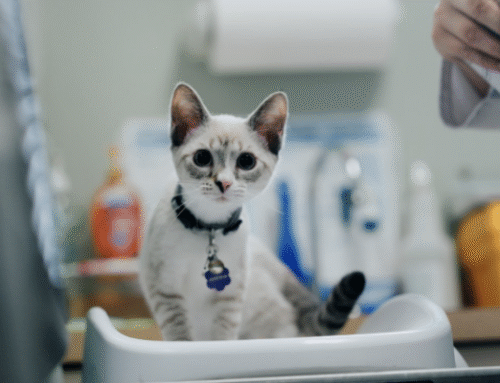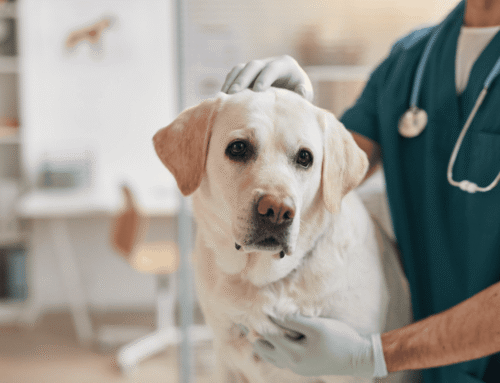It’s so hot you could bake a dog biscuit on the sidewalk.
It’s so hot that two fire hydrants fought over a dog.
It’s so hot that your cat signed up for swimming lessons.
Should we go on? The dog days of summer are officially here in South Carolina, and our pets are feeling the heat. Sadly, this means they’re at risk for serious, sometimes life-threatening, heat-related health conditions. Learn how to protect your pet and avoid unexpected trips to Safe Harbor Animal Hospital in our summer safety guide.
It’s not all fun in the sun: Understanding heat risks for pets
Heat is an often overlooked danger to pets. Unlike people, dogs and cats can’t sweat to cool themselves and must instead rely on panting. In most circumstances, panting can efficiently lower body temperature, but excessive heat and humidity, prolonged heat exposure, dehydration, and intense physical exertion during warm weather can reduce its efficacy—especially since panting consumes significant energy. This can quickly lead to heatstroke (i.e., hyperthermia).
Heatstroke is a veterinary emergency that requires rapid intervention. A pet with heatstroke has dangerously high internal temperatures (i.e., 104 to 107 degrees) that can lead to permanent organ failure and death. Early heatstroke warning signs include excessive panting, elevated heart rate, drooling, restlessness, vomiting, mental dullness, and lack of coordination. If your pet is in heat distress, immediately take them to a cool location, wet them down with cool—never cold—water, and offer them fresh water to drink. Immediately transport seizing or unresponsive pets to the nearest veterinary facility for emergency care.
Avoid heat-related heartbreak by avoiding outdoor activities during extreme heat. Most importantly— never leave your pet unattended outdoors or in a vehicle.
Home is where the AC is: Never leave your pet unattended
Every year, countless pets experience heat-related emergencies or death when they are left in parked vehicles. Interior car temperatures can rise quickly, including on mild weather days. Despite cracked windows and shade, parked cars become like greenhouses, trapping increasingly hotter air inside their glass and metal frame.
According to the American Veterinary Medical Association, a car’s interior temperature can climb nearly 20 degrees in less than 10 minutes or almost 30 degrees in 20 minutes on a 70-degree day—putting trapped pets at extreme risk for fatal injury.
No matter how briefly you believe you’ll be gone, the risk of heat-related death is simply too great. If you cannot take your pet with you at your destination, leave them at home.
No sweat: Safe summer exercise for pets
Regular exercise is critical for your pet’s physical and emotional wellbeing and can help prevent unhealthy weight gain. Fortunately, with a few safety considerations and adjustments to your typical routine, you and your pet can stay fit and have fun outdoors during the dog days of summer. Our top tips include:
- Rescheduling exercise to cooler hours — Don’t exercise your pet during the midday heat. Reschedule outdoor activities for cooler early mornings or late evenings.
- Checking surface temperatures — Asphalt and concrete can become dangerously hot and retain heat for hours after the sun goes down. Test surfaces with your hand before expecting your dog to walk on them.
- Reducing exercise intensity — If you jog with your dog, consider a brisk walk or a shortened run. Low-impact exercise can deliver an effective workout without the risk.
- Playing indoor games — Puzzle toys, food-stuffed enrichment toys, trick training, and sniffing-based games (i.e., nose work) can mentally stimulate your pet, especially if they are at-risk (e.g., brachycephalic [flat-faced] breeds, puppies, kittens, and senior pets) and need to stay indoors during excessive heat.
The not-so-great outdoors: Backyard hazards for pets
Summer celebrations bring everyone to the yard or driveway, and along with extra human and four-legged friends, your pet may be met with unexpected dangers, such as:
- Heat exhaustion or heatstroke — During busy events, you may take your mind off your pet and they may overheat. Keep your pet indoors if you cannot supervise them at all times.
- Toxin exposure — Many common summertime items on the picnic table and lawn or inside the garage are poisonous to pets. Ensure your pet can’t access food that contains onions, garlic, xylitol, chocolate, macadamia nuts, raisins, grapes, or areas treated with fertilizer or pesticides (e.g., slug, snail, rat, or mouse bait).
- Choking hazards — Meat bones, corn cobs, and food wrappers can lead to a choking-related injury or become trapped in your pet’s intestines and require emergency surgical removal. Never allow your pet to eat these items, and ensure the trash is closed securely and out of your pet’s reach.
- Escape — Unsupervised pets can easily slip through open doors and gates. Ask guests to keep access points closed and ensure your pet wears current identification (e.g., collar and tags, microchip) at all times.
- Grill or fire-related injuries — Pets will do crazy things to steal meat or food from the grill and can be seriously burned or splattered with grease, and can cause accidental fires. Station the grill behind a pet-proof barrier or keep your pet indoors while the grill is hot, and remove the grease trap to prevent accidental ingestion.
Ensure your pet enjoys their best-ever summer by staying aware of heat-related hazards and being attentive to their needs. For additional heat safety advice, or to update your pet’s preventive care, contact Safe Harbor Animal Hospital—a member of the Animal Hospitals of the Low Country family.









Leave A Comment